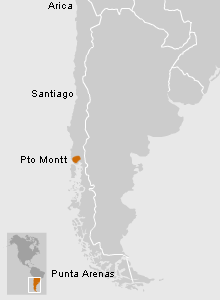Although there is still some debate around when exactly the Americas were first populated, it is now an accepted fact that the first colonizers came from Northeast Asia across the Bering Strait more than 15,000 years ago. From there, they began to populate the lands to the south, and by around 14,500 BCE were inhabiting encampments at Monte Verde. The unique conditions of the site have preserved some evidence, allowing us a window into how these early hunters adapted to the rainforest environment. After the extinction of the megafauna, the cornerstone of their early economy, these Paleo-Indian groups reoriented their hunting activities to new, smaller species, giving way to the Archaic Period.
How to Arrive
El Museo se encuentra ubicado en pleno centro de Santiago, en la esquina de las calles Bandera y Compañía, a una cuadra de la Plaza de Armas.
Tickets
Chileans and resident foreigners: $1,000 Foreigners: $8,000 Chilean students and resident foreigners: $500 Foreign students: $4,000
Guided Visit
El Museo cuenta con un servicio de guías, sin costo adicional, para los establecimientos educacionales.
Information for Teachers
Invitamos especialmente a coordinarse con alguno de nuestros guías para programar una visita o actividades de motivación y seguimiento que aprovechen de la mejor forma la experiencia de visitarnos.
Audioguides
Download recordings of the Permanent Exhibition display texts in English, French, Portuguese and Spanish here. These audioguides are in mp3 format and are arranged by cultural area, following the same order as our exhibit galleries. Descargue desde esta página audioguías en castellano, inglés, francés y portugués con los textos de las vitrinas de la […]






































